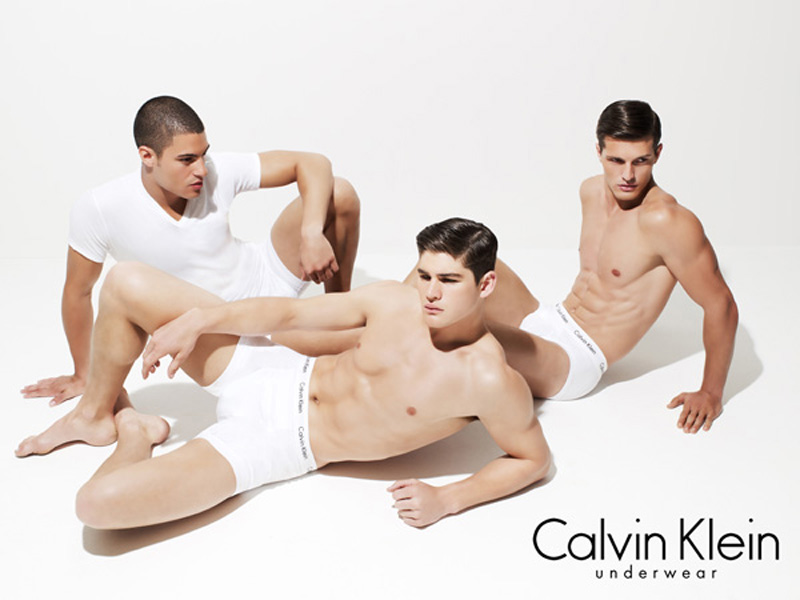
Full-Frontal Male Nudity in Mainstream Advertising

Full-Frontal
Male Nudity in Mainstream Advertising
"Break out the champagne, get out the party lights, strike up the band-the last taboo has finally been broken." That's how the country's top news magazine announced the first full-frontal male nude in mainstream American advertising.
The product being promoted is a new Yves Saint Laurent men's fragrance called M7, but the real star of the historic ad is French model Samuel de Cubber. The black-and-white image shows de Cubber, a former martial arts champion, lounging nude on a bare floor, with his genitals in full view.
Designers whose job it is to describe the artistry of photos are calling this one "minimalist," but, well, there are at least three aspects of de Cubber that are more appropriately designated "maximalist."
For those of us who pay attention to the media, the significance of the pioneering ad is that, after decades of women being stripped down to their birthday suits to sell products, here is a dramatic instance of a naked man being used for that purpose.
Of course the driving force behind the ad has nothing to do with either being artistic or treating men and women equally. Instead, the real goal is to be shocking and controversial as a means of getting publicity and attention in order, ultimately, to sell more pricey cologne.
The Associated Press, Reuters, Ad Age, the San Francisco Examiner and a whole legion of Internet publications have joined Time in filling their roles in the plan by writing articles about the ad.
Most of the stories quote YSL artistic director Tom Ford defending the nudity.
"Perfume is worn on the skin," according to Ford, "so why hide the body?"
French Vogue and Artforum International are among the publications that agree with Ford and are now running the full-monty version of the ad.



By contrast, several other magazines-including Out and GQ-have opted to continue, so to speak, to "hide the body." They are both running more modest, genital-covered versions of the image showing de Cubber's perfect facial features and well-toned chest but leaving to the viewer's imagination what lies below the waist.
What I find curious about the decision that these two magazines have made vis-à-vis publishing the image is the choices that they routinely make regarding their sex-oriented editorial messages.
A recent issue of Out, a magazine that is aimed specifically toward gay readers, contains a three-page article titled "How To Get Laid." The piece begins: "This is not about love. This is about putting on a really cute T-shirt, going to your favorite bar, and taking someone home for hot, sweaty man sex."
And the longest article in this month's issue of GQ is a six-page celebration of the fact that some scientific studies have shown that women never tire of having sex with the same man year after year, while the biological makeup of men makes them resistant to repeated sex with the same woman-although they can quickly be re-aroused when presented with a new potential sex partner.
In short, the two magazines glorify sexual abandon in their editorial content but remain downright prudish when it comes to male nudity in their ads.

